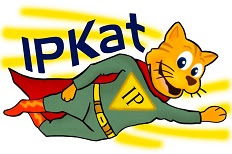What is the TTP?
The Trans-Pacific Partnership has recently been ratified. It is an international treaty that sets a series of terms aimed at improving the commercial relationships among the Signatory Parties.
Who are the members?
The members who ratified the TPP last October were: United States, Japan, Australia, New Zealand,
Chile, Mexico, Peru, Singapore, Brunei, Canada, Vietnam and Malaysia.
What about China?
Other countries such as China or
Colombia chose not to enter the agreement at this time, however it does not preclude them from joining it in the near future.
What are the main concerns?
The New Zealand Government was the first to publish a
version of the Treaty, which is still under revision and may be subject to changes. Nevertheless the list of priority issues – which are not likely to change – are:
National Treatment and Market Access for Goods
Rules of Origin and Origin Procedures
Textiles and Apparel
Customs Administration and Trade Facilitation
Trade Remedies
Sanitary and Phytosanitary Measures

Technical Barriers to Trade
Investment
Cross-Border Trade in Services
Financial Services
Temporary Entry for Business Persons
Telecommunications
Electronic Commerce
Government Procurement
Competition Policy
State-Owned Enterprises and Designated Monopolies
Intellectual Property
Labour
Environment
Cooperation and Capacity Building
Competitiveness and Business Facilitation
Development
Small and Medium-Sized Enterprises
Regulatory Coherence
Transparency and Anti-Corruption
Administrative and Institutional Provisions
Dispute Settlement
May a European SME benefit from the Treaty?
Yes. Even though there are some rules that will only benefit companies based in the Member States of the Treaty, there are others directed towards the improvement and harmonization of legal systems and institutions of each Member.
Concerning Intellectual Property Rights, the “National Treatment” and “Most Favoured Nation” principles from the
Paris Convention makes it mandatory to apply the same advantages that the State concedes to its own nationals (or nationals from third countries) to the nationals from Signatory Parties (all EU countries belong to the Paris Convention).
We are going to examine how some of these improvements could be very helpful for EU SMEs
Trademarks: What will be the main advantages for EU applicants?
One of the first obligations that the TTP imposes on signatory parties is to ratify two Trademark-Related treaties: The
Madrid Protocol and the
Singapore Treaty.
The first one establishes the implementation of the Madrid System under WIPO´s administration, which allows for the application of an International Trademark Registration in each member of the Madrid Agreement/ Madrid Protocol. EU citizens and companies will therefore be able to request the protection of their International Registrations in countries such as Peru, Chile, Brunei or Malaysia, which is usually cheaper and simpler than applying for a National Trademark on each of these countries.
On the other hand, the Singapore Treaty aims to harmonise the application, registration and management procedures of Trademark files. Thus, applicants and holders in countries such as Brunei, Chile, Peru, Vietnam and Malaysia will benefit from the advantages of the harmonization of Trademark procedures, which will be closely similar to those in their countries of origin.
Other important changes to highlight are the suppression of the visibility of the sign requirement that is targeted to allow the registration of non-conventional Trademarks (such as smell trademarks and sound trademarks) or the obligation of maintaining an on-line and freely accessible Trademark database.
Other consequences of the TPP is that the three Latin American members of the TPP, Mexico, Chile and Peru, plus Colombia have signed a
Joint Declaration aimed at harmonizing their procedures on Trademarks and Patents and to develop good practices to reduce the granting time.
Patents: How EU SMEs can benefit from the TTP provisions?
Under the TTP the Parties are obliged to sign the
Budapest Treaty on the International Recognition of the Deposit of Microorganisms for the Purposes of Patent Procedure. Hence Patents that include microorganisms as part of it will be accepted in each Member of the Treaty.
Another novelty is the setting of a grace period, whose scope will be extended to 12 months prior the Patent Application. Any disclosure done by the applicant or a third party that obtained the information from the applicant will not be taken into account when evaluating the novelty of the patent (WATCH-OUT! European countries do not provide for a “grace period” therefore any disclosure may jeopardise your European applications’ novelty).
One of the most common problems that EU companies face when patenting abroad is that grant procedures tend to be longer than in Europe. The TTP provides for the possibility of requesting a “Patent Term Adjustment” when unreasonable delays have been incurred during the issuance of the Patent. We should wait to see how TTP Members include such obligation within their laws, but it will certainly have a deterrent effect on Patent granting delays.
 Copyright and Related Rights: What is new?
Copyright and Related Rights: What is new?
The main milestone on Copyright and Related Rights protection is that Signatory Parties must ratify the WIPO Copyright Treaty
WCT and the WIPO Performances and Phonograms Treaty
WPPT.
WCT slightly expands the scope of Protection stated in the
Berne Convention concerning economic rights and also includes specific articles on software and databases’ Copyright protection, whereas WPPT harmonizes the protection of certain related rights, namely those of performers and producers of phonograms. Additionally, TPP expands the duration of economic rights to seventy years after the author’s demise.
Enforcement: How will TPP help EU SMEs to enforce their rights?
The scope of the TPP also comprises measures addressed to ensure the effectiveness of the IP enforcement. For example, there are articles that strengthen the role of Technical Protection Measures (TPMs) in digital contents by establishing that the circumvention of such measures will be considered an infringement regardless of the infringement of the Copyright of the content itself.
Another measure towards an effective enforcement is the possibility that the Signatory Parties set pre-established and/or additional damages in case of infringement. Both cases aim to have a deterrent effect. Additionally, pre-established damages will also be very helpful for the purposes of awarding damages to the right holder.
Finally, a series of dispositions are aimed at obtaining the cooperation of Internet Services Providers in order to stop infringements and identify infringers. Such dispositions have been very controversial.
If you want to read more (in Spanish) on these and other TPP related issues take a look
here (part I) and
here (part II)
Post written by Vicente Zafrilla Diaz-Marta, IP expert at
Latin America IPR SME Helpdesk 
 Las agencias de propiedad industrial de los
cuatro países que forman la Alianza
del Pacífico (Chile, Colombia, México y Perú), emitieron una Declaración
Conjunta en la que acordaron “incrementar los esfuerzos para permitir, en
el futuro, la adopción de medidas que beneficien significativamente, y cada vez
más, a los usuarios de nuestros respectivos sistemas de propiedad industrial”.
Las agencias de propiedad industrial de los
cuatro países que forman la Alianza
del Pacífico (Chile, Colombia, México y Perú), emitieron una Declaración
Conjunta en la que acordaron “incrementar los esfuerzos para permitir, en
el futuro, la adopción de medidas que beneficien significativamente, y cada vez
más, a los usuarios de nuestros respectivos sistemas de propiedad industrial”.


















